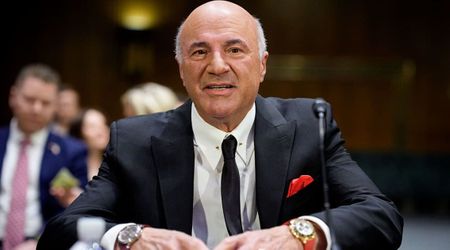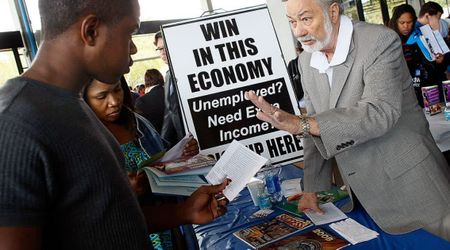FIRE Movement Pioneer Shares Early Retirement Insights: It's Not a One-Size-Fits-All Approach

Opting for early retirement requires careful financial planning and a solid understanding of the principles behind the FIRE (Financial Independence, Retire Early) movement. The primary goal of FIRE enthusiasts is to accumulate a substantial amount of savings through aggressive saving and investing strategies, allowing them to retire years earlier than the traditional retirement age.

The cornerstone of the FIRE strategy is the concept of the "FIRE number," which represents the amount of savings needed to sustain a desired lifestyle in retirement. This number is calculated by multiplying the estimated annual expenses in retirement by 25. For example, if someone anticipates needing $40,000 per year in retirement, their FIRE number would be $1 million ($40,000 x 25).
Once individuals have determined their FIRE number, they focus on saving and investing aggressively to reach this target. The goal is to build a portfolio that can support annual withdrawals of around 4% without depleting the principal over time. This withdrawal rate is based on historical market returns and aims to strike a balance between providing income in retirement and preserving the nest egg for the future.
The Pitfalls of Coast FIRE
Certain individuals pursue "Coast FIRE," a strategy where they cease actively saving additional funds and rely on their investments to gradually reach their retirement goals over time. However, Sam Dogen, the founder of Financial Samurai and a prominent figure in the FIRE movement, highlights a common oversight among early retirees.
"They often underestimate the unpredictable nature of life and fail to account for potential changes or challenges that may arise before they reach their desired retirement age and begin living off their savings," he says.

Dogen's FIRE Journey
Dogen, with personal experience in the nuances of early retirement, embarked on this journey at the age of 34 in 2012. At that time, he believed he had amassed sufficient passive income, amounting to $80,000 annually, to lead a comfortable life on a fruit orchard in Hawaii with his spouse. However, reality diverged from his initial plan as unforeseen changes unfolded over time.
Presently, he resides in San Francisco with his wife and two children, and their annual expenses have surged to nearly $264,000. Faced with unexpected circumstances, Dogen made the difficult decision to liquidate income-generating assets to purchase a multimillion-dollar home.

Now, despite his investments yielding a healthy passive income of $380,000 in 2023, he finds himself preparing to re-enter the workforce.
Dynamic Planning
When Dogen contemplated leaving his job in 2012, he faced a crucial decision: could he sustain himself on his $80,000 passive income alone? Initially, he planned to ensure he had enough financial stability to live comfortably until his wife joined him three years later. However, at 34, with his wife being just 31, he grappled with uncertainty regarding the timing of his early retirement.
The pivotal moment came when Dogen successfully negotiated a severance settlement that covered five years of basic living expenses. This negotiation proved instrumental in tipping the scales in his favor. Recognizing that achieving financial freedom necessitates generating enough passive income to cover living expenses, securing a severance package became his first rule of FIRE (Financial Independence, Retire Early).
His second rule, though less conventional, revolves around the concept of negotiating a severance package—an approach he acknowledges requires courage and confrontation. For those aspiring to retire early, he encourages exploring the possibility of negotiating a severance package as part of their strategy.

Originally, he envisioned living on his $80,000 passive income while awaiting his wife's eventual arrival and the potential negotiation of her own severance package. By then, he aimed to have amassed at least $100,000 to support both of them. They aspired to lead a modest life on his grandfather's fruit farm in Hawai’i. However, their plans underwent a significant transformation when they became parents.
Coast FIRE and Projection Pitfalls
Their financial circumstances took another turn when their second child was born in 2019. This new addition prompted Dogen to reassess his approach to achieving financial independence, realizing that it required more effort and strategic planning than initially anticipated.
He cautions against placing sole reliance on Coast FIRE, a concept where individuals count on their investments to grow over time to reach their retirement objectives. He contends that this approach lacks prudence as it doesn't guarantee genuine financial independence and may deter individuals from starting families.

The inherent unpredictability of Coast FIRE poses significant challenges. While it involves estimating the amount necessary for financial independence by multiplying expenses, there's considerable uncertainty surrounding annual investment returns and inflation rates. Depending too heavily on speculative calculations can leave individuals vulnerable to future financial hardships.
Whether embracing Coast FIRE or adhering to the 4% rule, individuals are essentially making extensive projections about a future fraught with uncertainties. To mitigate the risk of financial shortfall, it's imperative to adopt dynamic planning strategies that account for various contingencies, ensuring that adequate funds are available when needed most.



















